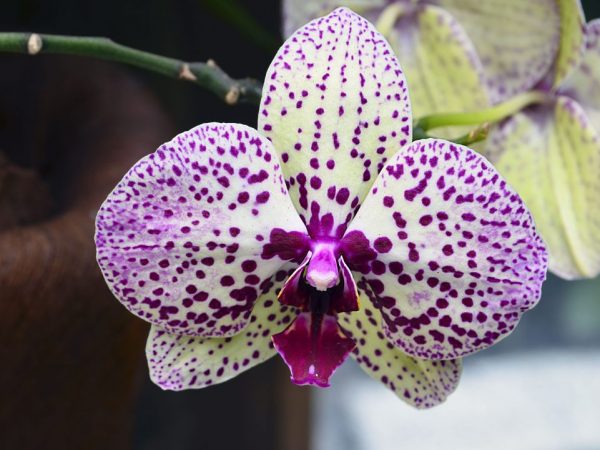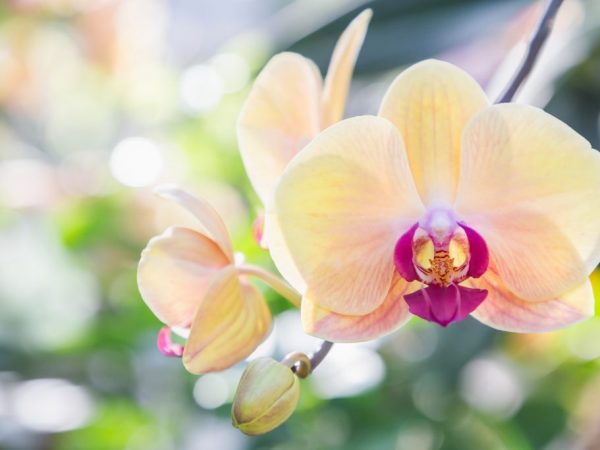How to use agriculture for orchids
There are factors that contribute to the proper development of indoor plants. These are illumination, temperature, humidity and appropriate feeding. Agricola for Orchids is an optimal nutrient mixture.

How to use agriculture for orchids
When a flower is fed
Orchids belong to the orchid family and the phalaenopsis genus. Plants of the genus Phalaenopsis belong to the epiphytic species. This means that they do not grow in the soil, but attach to the bark of trees or to the unevenness of the substrate on mountain slopes. The main supply of the necessary components comes from the humid air environment of the tropical forest.
Phalaenopsis needs periodic feeding. It is carried out both root and foliar. In both cases, agriculture is used with great success.
Orchids are fed in the following cases:
- According to the biological clock of the plant. Top dressing is applied no more than 2 times a month: before flowering and during active growth. The plant prompts whether it needs to be fed: if new shoots are formed at the point of growth, it is time to add a mineral cocktail.
- In autumn and winter, during the dormant period. The feeding process at this time is carried out no more than once a month.
- Foliar top dressing (spraying) is carried out during a period of intensive growth and if phalaenopsis develops poorly. In this case, the leaves acquire a pale yellow color or begin to wilt.
Refrain from feeding:
- Immediately after buying a flower in a store. Plants are delicate and take a long time to adapt to new conditions, so nothing needs to be done for 2-3 weeks.
- During flowering.
- In summer, when the air temperature rises strongly.
Benefits of the drug
The fertilizer has a composition specially developed for plants of the genus Phalaenopsis. The drug effectively protects the flower from fungal infections. Easy digestibility of the nutrient mixture promotes faster flower growth. Flowering starts earlier and lasts longer. Leaves and flowers take on a brighter color.
This mineral complex provides a quick restoration of the plant's vitality after the autumn-winter dormant period. It resists disease much better and tolerates adverse environmental conditions.
The drug is convenient to use, since it has a liquid consistency, which is most suitable for root and foliar feeding of orchids. They also note the safety and low price of the solution.
Chemical composition and application

Watering the orchid with fertilizer
Agricola is available in the form of a concentrated liquid solution, in granules or in the form of special sticks. The composition of the liquid form is as follows: nitrogen - 4%, phosphorus - 5%, potassium - 6%, sodium humate - 0.8%. In addition, it contains trace elements: boron, copper, zinc, manganese, iron and molybdenum.
The package contains 250 ml of fertilizer.
The instructions for use are simple. For root feeding, 5 ml of the solution is diluted in 1 liter of water.For the convenience of preparing the working mixture, the bottle with the concentrated solution is equipped with a measuring cap. The process is repeated after 10-14 days, without exceeding the rate of application of the nutritive substance.
Safety engineering
According to the instructions for use, the concentrate should be handled with care. When diluting the solution, be sure to wear rubber gloves. Do not allow drops of the mixture to get on the skin and, especially, in the eyes. After preparing the working mixture, you must thoroughly wash your hands and face with soap and rinse your mouth.
The drug is stored in a cool dry place as far away from food and medicine as possible.
If the solution gets on the skin, this place is washed with running water. The same is done in case of eye contact.
Summarizing
The most preferred option for fertilizing plants of the genus Phalaenopsis at home is a liquid concentrate of Agricola. When diluted, it allows you to create conditions for the development of plants. The use of agriculture helps to provide the flower with adequate conditions for growth and flowering.


